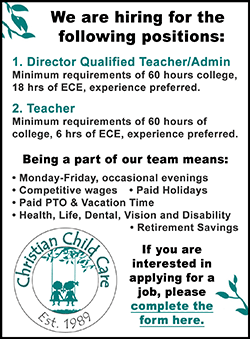Weaker US jobs data soothes Fed worries of renewed overheating
 Send a link to a friend
Send a link to a friend
 [May 04, 2024] By
Howard Schneider and Lindsay Dunsmuir [May 04, 2024] By
Howard Schneider and Lindsay Dunsmuir
(Reuters) - Federal Reserve officials, buffeted by concerns the economy
might again overheat, got relief on Friday when jobs data for April
showed a marked cooling in wage growth and a pace of hiring in line with
levels seen before the COVID-19 pandemic.
The gain of 175,000 payroll jobs last month was the lowest since October
of 2023, while the 3.9% annual change in average hourly earnings was the
smallest since May of 2021 and continued what has been a steady decline
towards the mid-3% range which policymakers feel is consistent with
their 2% inflation target.
It was still a "solid" report in terms of the numbers of jobs generated,
said Chicago Fed President Austan Goolsbee, but more like the type of
employment growth seen before the COVID-19 pandemic and therefore a
boost to confidence that the economy is not again overheating.
"The more jobs numbers like the ones we saw today, the more you see
easing of inflation, the more comfort ... I would have," Goolsbee said
on Bloomberg Television.
He did not say, however, if he expected the Fed to cut rates this year.

Inflation "hit a bump at the start of this year," Goolsbee said. "We
have go to get comfort it is not a sign of reacceleration."
Fed Governor Michelle Bowman, who has been among the more ardent voices
on the steps needed to control inflation, said after the release of the
data that her outlook remained "that inflation will decline further with
the policy rate held steady."
Bowman, along with all other members of the central bank's
policy-setting committee, voted earlier this week to keep the policy
interest rate steady in the current 5.25%-5.50% range.
'SOFT LANDING'
Traders responded to the jobs data by adding to bets that the Fed will
deliver its first rate cut in September and likely follow with a second
quarter-percentage-point cut in December. Both probabilities had been
sliding as inflation data ran hotter than anticipated and Fed officials
at their April 30-May 1 meeting noted the lack of recent progress in
lowering the pace of price increases.
Other data, such as a slowdown in overall output, was dismissed as
masking strong underlying demand, while a weak productivity reading for
the first three months of the year raised the possibility that a key
force helping to slow inflation may be of less assistance in the months
ahead.
[to top of second column] |

A “Help Wanted” sign hangs in restaurant window in Medford,
Massachusetts, U.S., January 25, 2023. REUTERS/Brian Snyder/File
Photo

But Fed Chair Jerome Powell in his post-meeting press conference on
Wednesday cited an array of indicators he felt showed the labor
market moving towards better alignment between the hiring demands of
employers and the number of people looking for jobs.
Data on job openings, the rate at which workers are quitting jobs,
and the pace at which firms are hiring, have all indicated some
softening in the labor market.
In surveys of workers and businesses, answers to questions about the
ease of finding jobs or filling positions "have come back down to
pre-pandemic levels," Powell said.
The weaker-than-expected jobs gain in April was a wide miss from the
243,000 additional positions expected by economists in a Reuters
poll.
But it also hit a spot that Powell and his colleagues may see as
bolstering their hopes of a "soft landing" in which inflation is
tamed without a major hit to employment or a painful recession.
While the jobless rate rose one-tenth of a percentage point to 3.9%,
it remained below the 4.1% figure Fed officials at the median feel
is aligned with their 2% inflation target.
The jobs growth last month also remained close to the monthly
average of 183,000 seen in the decade before the pandemic, and above
the roughly 100,000 that policymakers feel is needed to accommodate
population growth.
"A 175,000 per month pace is still plenty good enough to absorb new
entrants into the labor force and sustain a low unemployment rate,"
said Thomas Simons, senior U.S. economist at Jefferies.
(Reporting by Gertrude Chavez and Lindsay Dunsmuir; Editing by Chizu
Nomiyama and Paul Simao)
[© 2024 Thomson Reuters. All rights
reserved.]
This material may not be published,
broadcast, rewritten or redistributed.
Thompson Reuters is solely responsible for this content.
 |